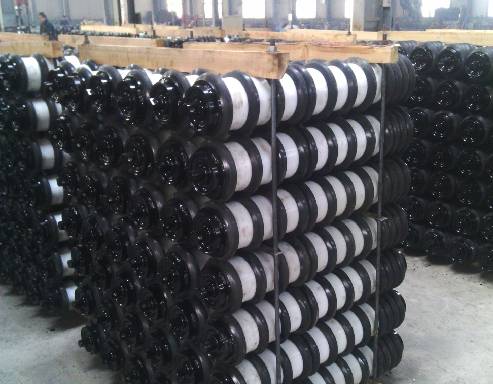 Afrikaans
Afrikaans  Albanian
Albanian  Amharic
Amharic  Arabic
Arabic  Armenian
Armenian  Azerbaijani
Azerbaijani  Basque
Basque  Belarusian
Belarusian  Bengali
Bengali  Bosnian
Bosnian  Bulgarian
Bulgarian  Catalan
Catalan  Cebuano
Cebuano  Corsican
Corsican  Croatian
Croatian  Czech
Czech  Danish
Danish  Dutch
Dutch  English
English  Esperanto
Esperanto  Estonian
Estonian  Finnish
Finnish  French
French  Frisian
Frisian  Galician
Galician  Georgian
Georgian  German
German  Greek
Greek  Gujarati
Gujarati  Haitian Creole
Haitian Creole  hausa
hausa  hawaiian
hawaiian  Hebrew
Hebrew  Hindi
Hindi  Miao
Miao  Hungarian
Hungarian  Icelandic
Icelandic  igbo
igbo  Indonesian
Indonesian  irish
irish  Italian
Italian  Japanese
Japanese  Javanese
Javanese  Kannada
Kannada  kazakh
kazakh  Khmer
Khmer  Rwandese
Rwandese  Korean
Korean  Kurdish
Kurdish  Kyrgyz
Kyrgyz  Lao
Lao  Latin
Latin  Latvian
Latvian  Lithuanian
Lithuanian  Luxembourgish
Luxembourgish  Macedonian
Macedonian  Malgashi
Malgashi  Malay
Malay  Malayalam
Malayalam  Maltese
Maltese  Maori
Maori  Marathi
Marathi  Mongolian
Mongolian  Myanmar
Myanmar  Nepali
Nepali  Norwegian
Norwegian  Norwegian
Norwegian  Occitan
Occitan  Pashto
Pashto  Persian
Persian  Polish
Polish  Portuguese
Portuguese  Punjabi
Punjabi  Romanian
Romanian  Russian
Russian  Samoan
Samoan  Scottish Gaelic
Scottish Gaelic  Serbian
Serbian  Sesotho
Sesotho  Shona
Shona  Sindhi
Sindhi  Sinhala
Sinhala  Slovak
Slovak  Slovenian
Slovenian  Somali
Somali  Spanish
Spanish  Sundanese
Sundanese  Swahili
Swahili  Swedish
Swedish  Tagalog
Tagalog  Tajik
Tajik  Tamil
Tamil  Tatar
Tatar  Telugu
Telugu  Thai
Thai  Turkish
Turkish  Turkmen
Turkmen  Ukrainian
Ukrainian  Urdu
Urdu  Uighur
Uighur  Uzbek
Uzbek  Vietnamese
Vietnamese  Welsh
Welsh  Bantu
Bantu  Yiddish
Yiddish  Yoruba
Yoruba  Zulu
Zulu conveyor snub roller
Understanding Conveyor Snub Rollers Essential Components of Conveyor Systems
Conveyors play a vital role in the modern industrial landscape, facilitating the efficient movement of goods and materials in various sectors. A key component in conveyor systems is the snub roller, which may not be as widely recognized as other elements, yet serves a critical function in enhancing the operational effectiveness and longevity of these systems. In this article, we will explore the purpose, functions, and importance of conveyor snub rollers.
What is a Conveyor Snub Roller?
Conveyor snub rollers are cylindrical components used in conveyor systems, typically positioned at specific angles to create a snubbing action against conveyor belts. The primary function of these rollers is to alter the direction of the conveyor belt, assisting in the transition from one plane to another. While they may seem like simple mechanical components, their role is crucial in ensuring the belt runs smoothly and efficiently.
The Function of Snub Rollers
1. Belt Tension Management One of the main roles of snub rollers is to help manage the tension of the conveyor belt. By providing an additional point of contact, they assist in maintaining the proper tension required for optimal operation. This is especially important in longer conveyor systems where slack in the belt can lead to inefficient performance and potential failures.
2. Belt Alignment Snub rollers play a critical role in aligning the conveyor belt properly. Misalignment can cause excessive wear and tear on both the belt and the rollers, leading to costly downtimes and repairs. By ensuring that the belt remains aligned throughout its travel, snub rollers help increase the system's overall efficiency and lifespan.
3. Reducing Slip and Increasing Traction Another significant benefit of snub rollers is their ability to reduce belt slip. This occurs when the drive pulley advances but the belt does not move at the same rate. By providing additional contact points, snub rollers enhance traction, allowing for improved power transmission and reduced energy consumption.
4. Facilitating Direction Changes In many conveyor systems, materials need to be redirected. Snub rollers assist in this by enabling the conveyor to bend or curve without strain, maintaining the integrity of the belt while allowing for flexible operation.
conveyor snub roller

Advantages of Using Snub Rollers
Integrating snub rollers into conveyor systems comes with multiple advantages
- Improved Efficiency By ensuring the belt operates smoothly and maintains optimal tension, snub rollers contribute to an overall boost in the efficiency of the conveyor system.
- Enhanced Durability With proper alignment and tension, the wear and tear on both the conveyor belt and the rollers are significantly reduced, promoting a longer lifespan for all components involved.
- Reduced Maintenance Costs By preventing slippage and misalignment, snub rollers can help lower maintenance costs over time. This is due to fewer breakdowns and less frequent need for replacements.
- Flexibility and Adaptability In complex conveyor setups, snub rollers enable designers to create more flexible systems that can adapt to different types of products and flow patterns without compromising performance.
Conclusion
In summary, while conveyor snub rollers may not be the most glamorous component of a conveyor system, their significance cannot be overstated. They play an essential role in maintaining proper tension, aligning the belt, reducing slip, and enabling direction changes. The advantages they bring—ranging from improved efficiency to reduced upkeep costs—make them a valuable asset in various industries. As businesses continue to strive for higher productivity and streamlined operations, the importance of conveyor snub rollers remains a focal point in effective conveyor system design and maintenance. Whether you're in manufacturing, warehousing, or logistics, understanding and utilizing these components can drive significant improvements in operational efficiency.
-
Revolutionizing Conveyor Reliability with Advanced Rubber Lagging PulleysNewsJul.22,2025
-
Powering Precision and Durability with Expert Manufacturers of Conveyor ComponentsNewsJul.22,2025
-
Optimizing Conveyor Systems with Advanced Conveyor AccessoriesNewsJul.22,2025
-
Maximize Conveyor Efficiency with Quality Conveyor Idler PulleysNewsJul.22,2025
-
Future-Proof Your Conveyor System with High-Performance Polyurethane RollerNewsJul.22,2025
-
Driving Efficiency Forward with Quality Idlers and RollersNewsJul.22,2025





























